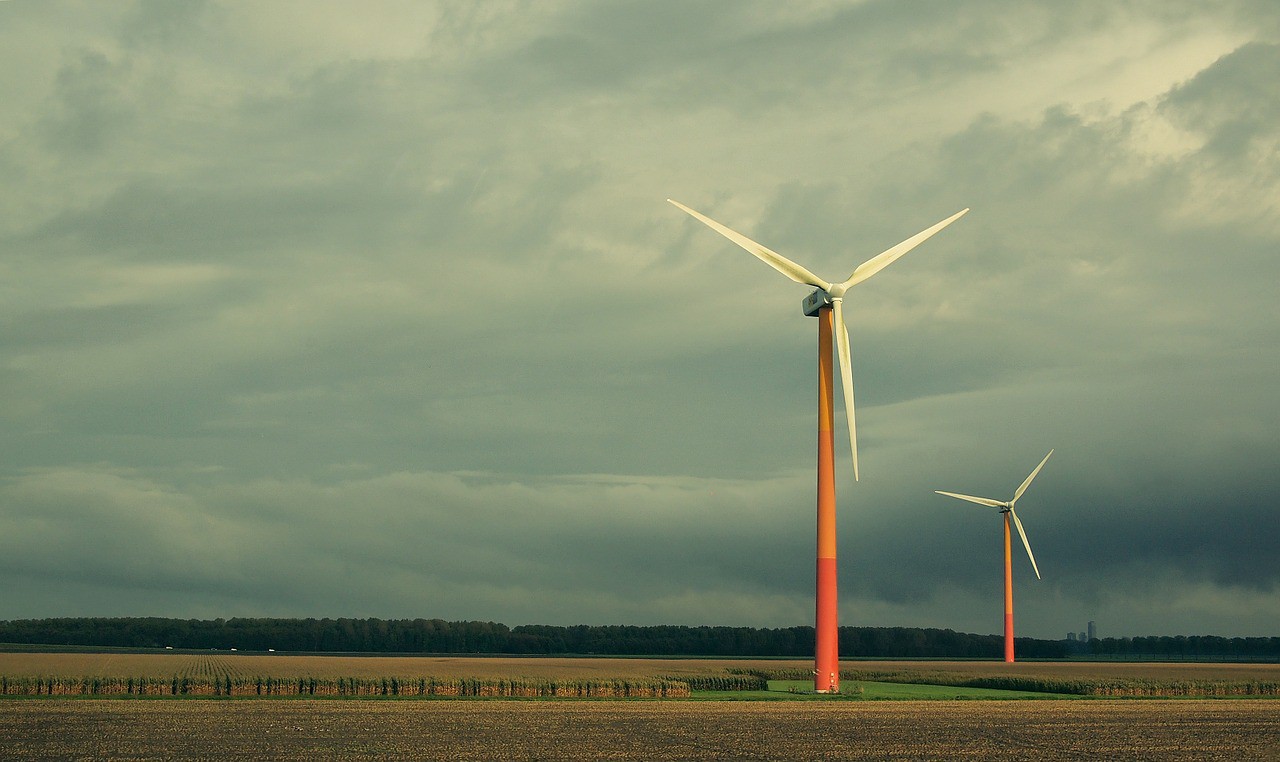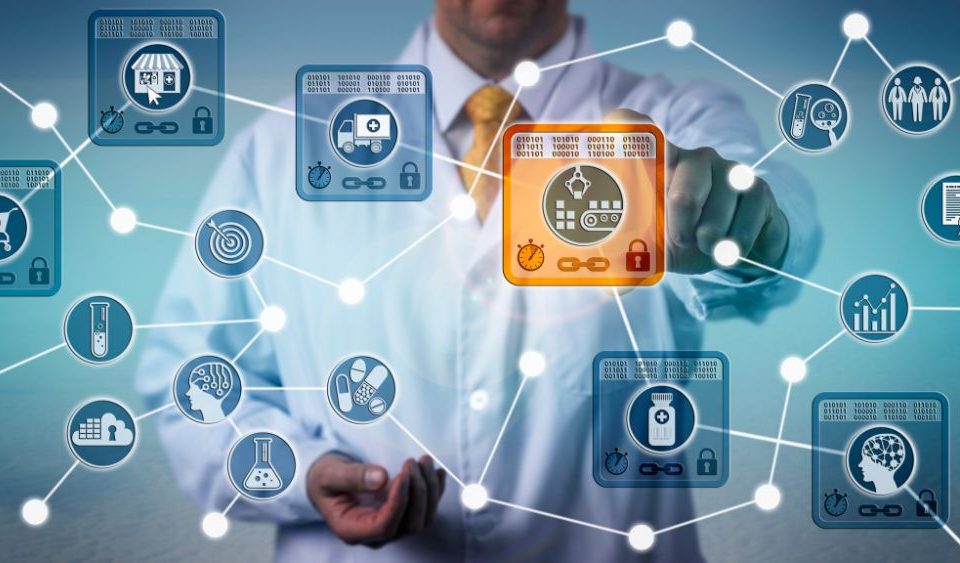Blockchain and the energy sector: an introduction

Almost 200 companies and startups are testing the technology in the renewable energy and smart grid sector
by Federico Bo
For more than a century, the energy sector has remained substantially unchanged: its business model linked to the centralization of production (essentially with fossil fuels, hydroelectric energy and then nuclear energy), and the presence of a relatively small number of large operators, in a one-to-many distribution model. In recent years, however, the industry has seen radical transformations due to the emergence of renewable energy sources, issues related to climate change and new technologies. There are three key processes underway: decarbonization, decentralization and digitization.
The Internet of Things, Artificial Intelligence and blockchain are revolutionizing energy’s entire supply chain, making internal processes more efficient and reducing costs for large companies; but more than anything they are opening the doors to new architectures, infrastructures and business models with an increasingly marked shift towards consumers, no longer passive users but active agents — also as producers (“prosumers”) — of a more heterogeneous, transparent and sustainable market.
Blockchain (a type of DLT, Distributed Ledger Technology) is a key element for this paradigm shift. Famous for being the underlying technology of cryptocurrencies such as Bitcoin, blockchain is actually a much more versatile system. In a nutshell, it is a database, distributed amongst the nodes in a network, where you can only add but not delete encrypted and validated information from the nodes themselves. The information is tied to “transactions” (in a very general sense of the word) collected in “blocks”, each of which is linked to the previous one. Software embedded in the blockchain code, called smart contracts, can perform automatic operations of verification, control and validation of transactions under multiple pre-set conditions.
Blockchains are not just technological, but also economic and legal entities. They can be public, accessible by anyone (eg Bitcoin, Ethereum) or private/ consortium blockchains, with usage restrictions linked to access credentials.
The characteristics that make blockchain technology as exciting as it is are:
– decentralization, where there is no “centralized” point of storage/ ownership of software and information — each node on the network contains both the “program” making the blockchain work and a copy of all recorded information;
– security, guaranteed by the distributed nature of blockchain, through cryptographic procedures and sophisticated consensus protocols between nodes;
– transparency, given that anyone (in the case of public blockchains) or authorized participants (for permissioned blockchains) can check the history of each transaction;
– immutability, due to information being append-only (data entered cannot be deleted or modified);
– traceability and speed in the verification of transactions (and in the resolution of disputes).
These features have made blockchain technologies a major subject of experimentation (including application in real-life cases) in many sectors at a global level: from fintech to logistics, from telecommunications to entertainment, to publishing and healthcare, and even non-profit, public services and e-governance. In fact, global blockchain technology revenues are expected to rise to over $23 billion in 2023.
But back to the energy sector: the proliferation of distributed energy resources such as renewable energy (solar, wind, etc), microgrids and intelligent devices — latest-generation digital meters, to name one example—necessitate the emergence of an increasingly interconnected and flexible system, inevitably more complex in nature. Such systems are required for the coordination, traceability and security of transactions: these will then enable new and diversified business models, especially from the distribution side.
This is where blockchain comes into play. Almost two hundred big players and startup companies are testing its use — the following areas are examples of where the technology is proving to be of most interest.
Transactive energy and prosumer-centered market places
Systems for home (or community) production of energy through solar panels, micro-wind, micro-geothermal are becoming increasingly widespread. At the moment, in Italy and in other countries, the production surplus is redirected to the national electric grid, with a non-immediate revenue mechanism for the prosumer.
With blockchain, direct energy sales from small producers to their neighbors could take place (generating fewer network losses); a P2P (peer to peer) proximity market could be created in which smart contracts manage negotiations automatically and (almost) in real-time, taking into account supply and demand, available power and other parameters monitored by smart devices. AI algorithms could help propose or choose the best rates. Transactions might generate micro-payments that can be made through custom cryptocurrencies or tokens.
Tokenization is, in fact, one of the most interesting features of blockchains. This provides the possibility of transforming any asset, physical or virtual, into a digital token, “shares” that can be divided up into as many desired parts, making the respective good (or the rights to it) exchangeable. Tokens associated with, for example, the watts sold or purchased, could be then converted into a fiat currency or put up for sale in a secondary market, just like one would do with shares. Tokens can also act as financial instruments for the multi-ownership of energy production devices.
Big companies
For big companies, the adoption of blockchain technology not only produces a reduction in costs and revolutionizes its customer service. It is also an opportunity to redesign internal processes in communication, automation and documentation.
Costs could be reduced through a variety of ways: optimizing energy processes, enabling secure M2M communication between smart devices, improving cyber-security, rendering supplier-partner transactions more efficient from the standardization of data and procedures, decreasing the incurrence of commercial disputes and speeding up their resolutions.
Commercial contracts and services for residential customers and industries will eventually be diversified through blockchain, due to micro-payments or the creation of “fluid” rates that can be changed almost instantaneously. Certifying the sustainable origin of the energy used in a timely and verifiable way to the consumer will also be an increasingly requested service as the world becomes more environmentally aware.
It will also be possible to obtain more efficient management of network voltages and related overloads, automatically reducing consumers’ consumption and adjusting electricity bills based on precise digital meter data recorded on the blockchain.
The same concept of the decentralized and “instantaneous” blockchain-based market can be used by large companies for the purchase and sale of other commodities, such as oil and natural gas.
The carbon credits and green certificate market
Currently, market structures for the sale and purchase of these certificates are fragmented and complex, often cutting out small energy producers.
Blockchain technology would drastically lower the costs of these transactions, increasing transparency and preventing the double-spend problem of these certificates.
Electric mobility
One of the most suitable fields for the use of blockchain technologies is where e-mobility is concerned. The transport system is decentralized in nature, its multiple participants being vehicles, drivers, fuel stations, and passengers of sharing services such as Uber, etc.
The blockchain could sustain new business models through favoring the market entry of new private suppliers, even those of small dimensions, owing an increasingly complex infrastructure. Drivers could choose charging stations at the most convenient prices via an app or even make this choice directly at a charging station (allowing customers to choose between multiple power suppliers). Network operators would gain management advantages in an optimized coordination of electric vehicles charging.
There will, therefore, be “a way for electric vehicles (EVs) to become cooperative and interactive grid assets, rather than ‘dumb’ sources of spiking grid demand that exceed circuit capacities.”
Smart world
Smart cities, smart homes, smart devices: all these “intelligent” entities will constantly require more energy. Only distributed and decentralized smart grids will be able to manage, distribute, balance and optimize this flow. Blockchains represent ideal containers of data, information and transactions, allowing their traceability and recovery through the various levels in a secure, transparent and privacy-friendly way.
Regulatory and control authorities
Blockchains are able to guarantee access to verified, certified, unalterable and standardized data. This is of great potential to regulators and supervisors, who are then empowered to carry out their functions more efficiently and quickly. State energy policies also stand to gain from this type of high-quality data, using it to bolster medium and short-term strategies and actions such as managing stocks, balancing incentives, matching environmental and industrial needs, even stimulating the growth of micro-grids to increase resilience in times of crisis, emergencies or natural disasters.
As a technology, blockchain is still relatively young. There are some critical issues in legal and regulatory aspects (for example, the legal validity of smart contracts), and there is also the matter of its scalability (there currently being a limitation to the number of transactions per second as compared to existing centralized systems), and the interoperability between different blockchains. There is also the matter of there being a general lack of adequate professional skills in the market. All these are challenges that will have to be addressed as the industry matures.
There is no doubt, however, that the ever-increasing amount of investments linked to blockchain technology is testament to the interest from the energy industry at a global scale. Rapid market growth of these technologies is to be expected, with forecasts standing at more than $6 billion by 2024.
Mangrovia is at the forefront of projects related to the areas mentioned above. At the beginning of the month, news of the first transaction for the sale of natural gas on blockchain broke, detailing a platform commissioned by renown network operator Snam and developed by Mangrovia Blockchain Solutions.
In the sector of decentralized and disintermediated P2P marketplaces, Mangrovia’s energy offshoot Prosume is also making waves. Prosume provides aggregators and utilities the blockchain software and support necessary for their product and solution offering to prosumers, allowing them to trace all energy data flows and rest assured that all information provided them is 100% verifiable and secure. The company is also managing a project with the municipality of Barcelona, in a PoC that will pave the way for prosumers to exchange different energy sources, promoting and accelerating new models of the energy community.
For more of topics like these, stay tuned.
References
Andoni M., Rebu V., Flynn D. et al. “Blockchain technology in the energy sector: A systematic review of challenges and opportunities” (an overview of dozens of projects and tests around the world)
German-Mexican Energy Partnership (EP) and Florence School of Regulation (FSR) “Blockchain meets Energy — Digital Solutions for a Decentralized and Decarbonized Sector”
Jurowiec P. “Blockchain in the Energy Sector”
Marchi B., Zanoni S. et al. “The disruptive potential of blockchain technologies in the energy sector”
Hertz-Shargel B., Livingston D. “Assessing blockchain’s future in transactive energy”
A computer engineer by training, I like to think of myself as a sort of tech-humanist hybrid. My interest is in the nexus between the scientific and the artistic, constantly seeking out the bridge between the world of technology and that of the arts, such as cinema and literature.
An ex-startupper and avid blogger, I regularly write on blockchain and AI technologies (visit my other publication here) and have recently joined the grove as a contributor.




